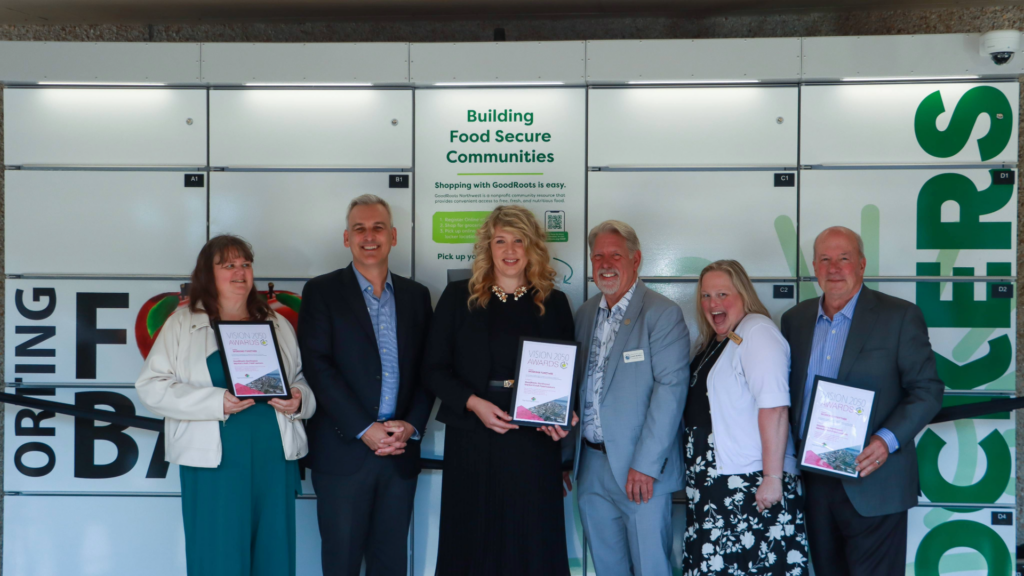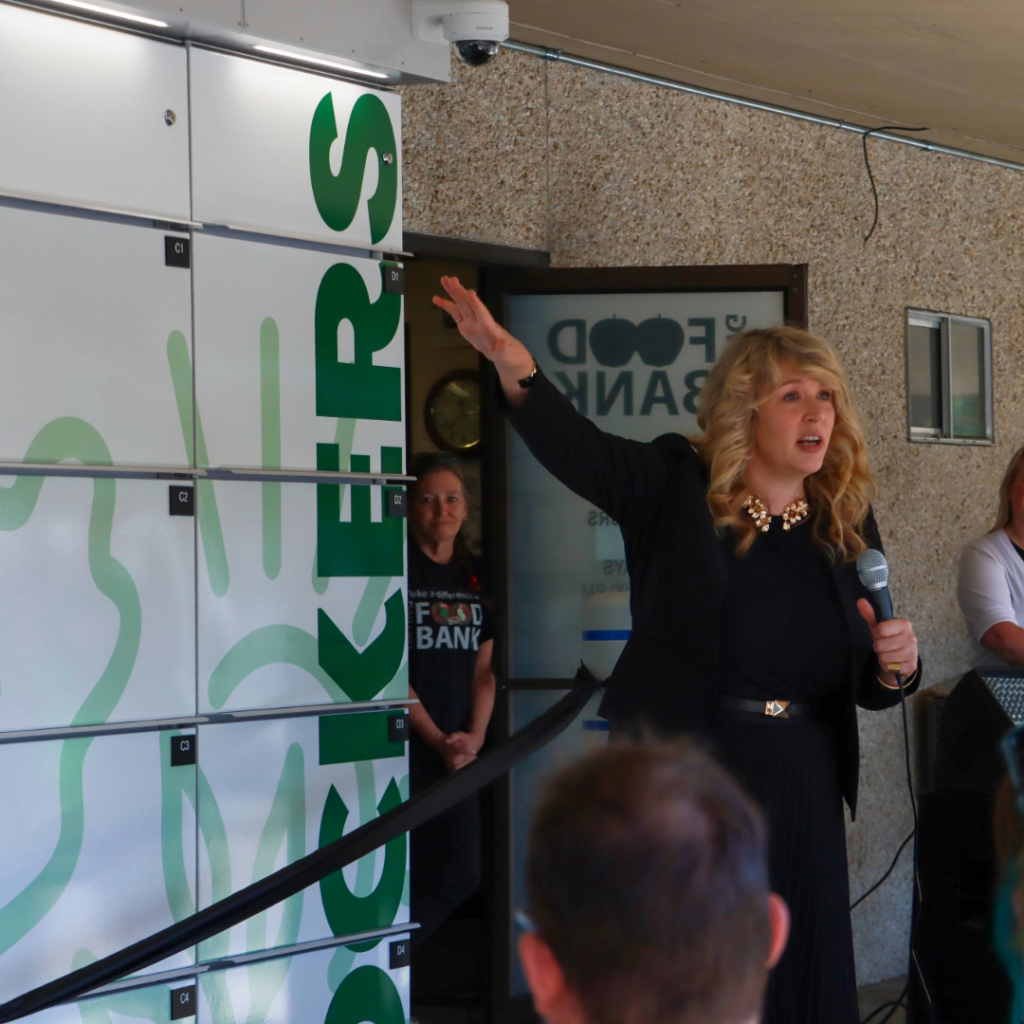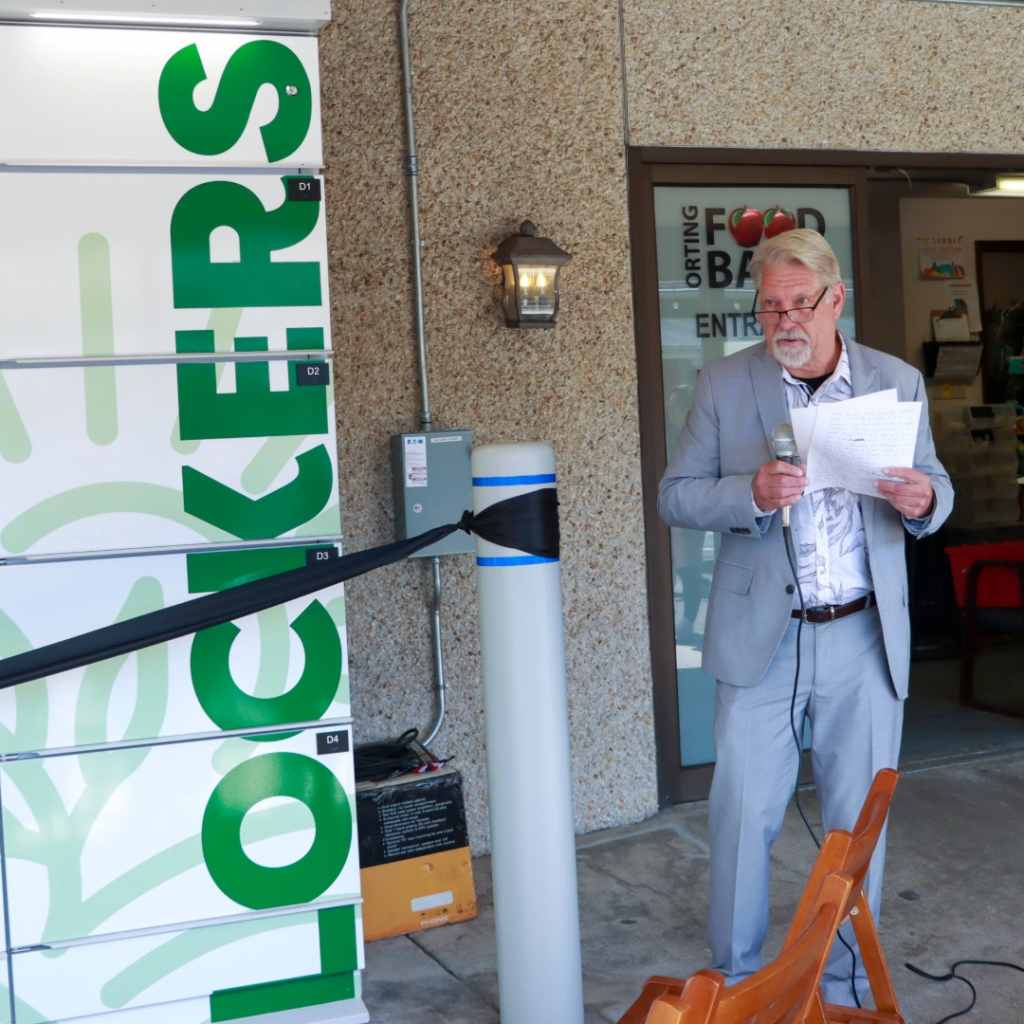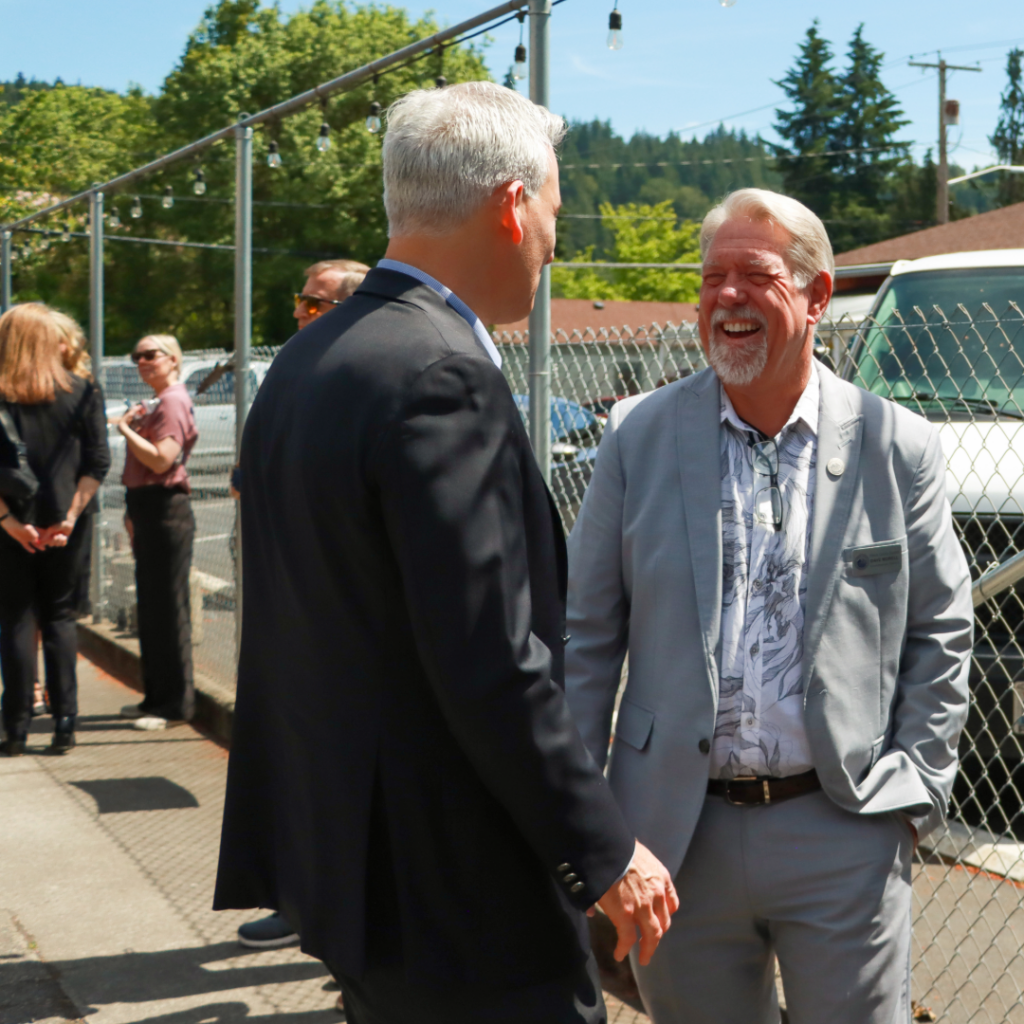From Crisis to Convenience: How Innovation Transformed Food Access During the Pandemic
By Bryan Dominique & Jaire Winesberry
Office of the Pierce County Council

In a 2022 letter to the U.S. Congress Committee on Appropriations, Congresswoman Kim Schrier (WA-08) requested $2 million for a local Pierce County Food Bank, writing, “This program will invest in greenhouse infrastructure to allow for year-round food production, which will lead to lower food purchasing costs and increase food security resilience. Additional investments in smart lockers will keep food fresh and safe for family pickups.”
Congresswoman Schrier was writing about the Bonney Lake Food Bank, and the smart lockers she referenced were a pilot project led by the food bank to distribute food using food lockers. The food bank received that $2 million grant.
“I started my job at the Bonney Lake Food Bank 10 days before the [COVID-19] pandemic hit, 10 days before the lockdowns. I spent a lot of hours inside that building in the first two months cleaning and sterilizing and, you know, dumpsters upon dumpsters of expired food,” says Stacey Crnich, CEO of GoodRoots Northwest. “I started noticing that people were circling the building all hours; I started thinking more of just like the psychology of being without a basic human need and how it changes who you are and your actions and your behavior.”
Amid the global COVID-19 pandemic, communities worldwide faced unprecedented challenges, particularly regarding access to basic necessities like food. It was during those pivotal times that Crnich envisioned a radical solution. Within six months, the Bonney Lake Food Bank transitioned from a traditional food bank to a farm-to-table location in the most literal sense, growing food right there on the campus that was then put into circulation. The food bank also partnered with local farmers in the area, expanding its reach and impact and supporting farmers’ ability to get their products to people. Crnich used broadcast texting to communicate with customers about food availability.
The Market Fresh Food Locker Program Begins
The food locker program came shortly after, and before its launch, the concept was met with skepticism from many people. However, a chance encounter with Pierce County Councilmember Dave Morell (District 1) helped Crnich secure $174,000 through the Pierce County Council to fund a pilot program. There are three food lockers in East Pierce County today, with more on the way thanks to a grant secured with the help of Congresswoman Schrier and Congresswoman Marilyn Strickland (WA-10).
The food lockers operate similarly to a PO Box, only the box is a network of lockers where people can pick up their food orders. Customers can order food from their food bank’s website or app, select a location near them for pick up, and pick it up once it’s delivered. The food lockers provide easy access to food orders 24 hours a day, seven days a week, and they can be refrigerated and heated to preserve food.
“The access these lockers provide is critical,” said Councilmember Morell. “For a single mother who can’t get to the food back between 1 and 4, it makes a big difference.”
Four years have passed since the pilot began, and The Market Fresh Food Lockers program is now a winner of a VISION 2050 Award from the Puget Sound Regional Council. This award recognizes innovative projects and programs that help ensure a sustainable future as the region grows.
By 2050, the region’s population will reach 5.8 million people, and VISION 2050 is the region’s plan for growth. The region’s cities, counties, tribes, ports, agencies, businesses, and communities have worked together to develop VISION 2050 to prepare for this growth and serve as a guide for sustaining a healthy environment, thriving communities, and a strong economy. Part of that vision now includes a reimagined food distribution network.
The Bonney Lake Food Bank Today
The Bonney Lake Food Bank is part of a new organization Crnich created called GoodRoots Northwest. This operation works to make systemic changes to the food system that positively impact underserved communities and ensure health equity and equitable access to vulnerable populations.
“In rural areas of Pierce County, access to affordable, healthy food options can be restricted or nonexistent because rural communities have limited transportation options,” said Councilmember Morell. Crnich and her team saw this and found an innovative solution, and they improved a whole lot more in the process. This team is leading the creation of a better, more sustainable food system that we can replicate across the state and nationwide.”
As GoodRoots Northwest continues to expand its reach into communities across Pierce County, Crnich says she wants the food lockers to serve as satellite hubs that industry can tap into. A locker can serve more people each day than 95% of the brick-and-mortar food banks in Pierce County, according to Crnich.
“When I reflect on this journey so far, I think about barriers, specifically barriers of our own design,” adds Crnich. “By eliminating barriers and embracing technology, we can reshape the landscape of food distribution, making it more equitable and efficient.”
In a recent episode of County Talk, a podcast produced by the Office of the Pierce County Council, Crnich spoke in depth about GoodRoots Northwest and her long-term vision for the future. You can listen to that here.


